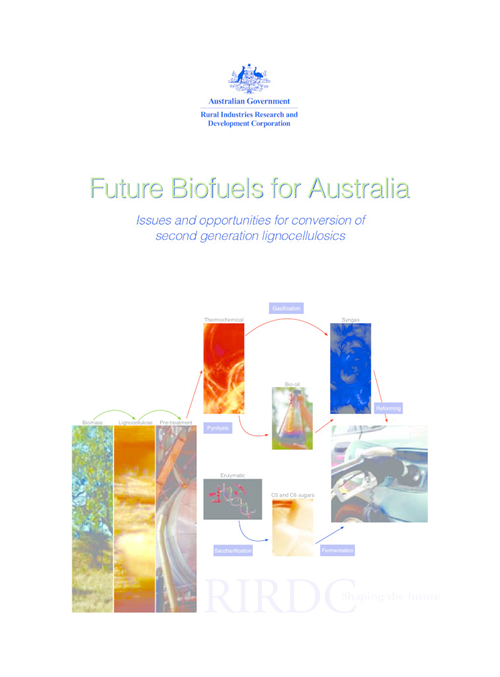This report describes the production of second generation biofuels which are obtained from lignocellulose (a collective term for lignin, cellulose and hemicellulose – components of plants and wood) with a particular focus on conversion processes. Cellulose and hemicellulose are polymers of sugars and are among the most abundant natural polymers on earth. Therefore, they have the potential to supply a considerable proportion of low cost transport fuels if cost effective conversion processes are available.
It is an outline of the current state-of-the-art in the conversion of lignocellulosic (the major natural polymer components of plants and wood) materials to 2nd generation biofuels. Rural industries, local, state and federal governments, policy makers, 1st generation biofuels producers, investment bodies, communities and the general public can all benefit from the information presented herein. Concise yet thorough summaries of lignocellulosics to biofuels are difficult to come by and the information presented in this report has been gleaned from a wide variety of sources. It is the aim of this report to provide an overview of the 2nd generation biofuels field in an Australian context and to describe the barriers to wider adoption of these biofuels. It builds on RIRDC reports published in 2007 that covered many aspects of current biofuel production and demonstrated the need for new sources of biomass to satisfy a larger scale of biofuel production.
The report is intended to inform government policy makers, rural industries, local, state and federal governments, research funding bodies and researchers, 1st generation biofuels producers, transport fuel experts, investment bodies, communities and the general public.





